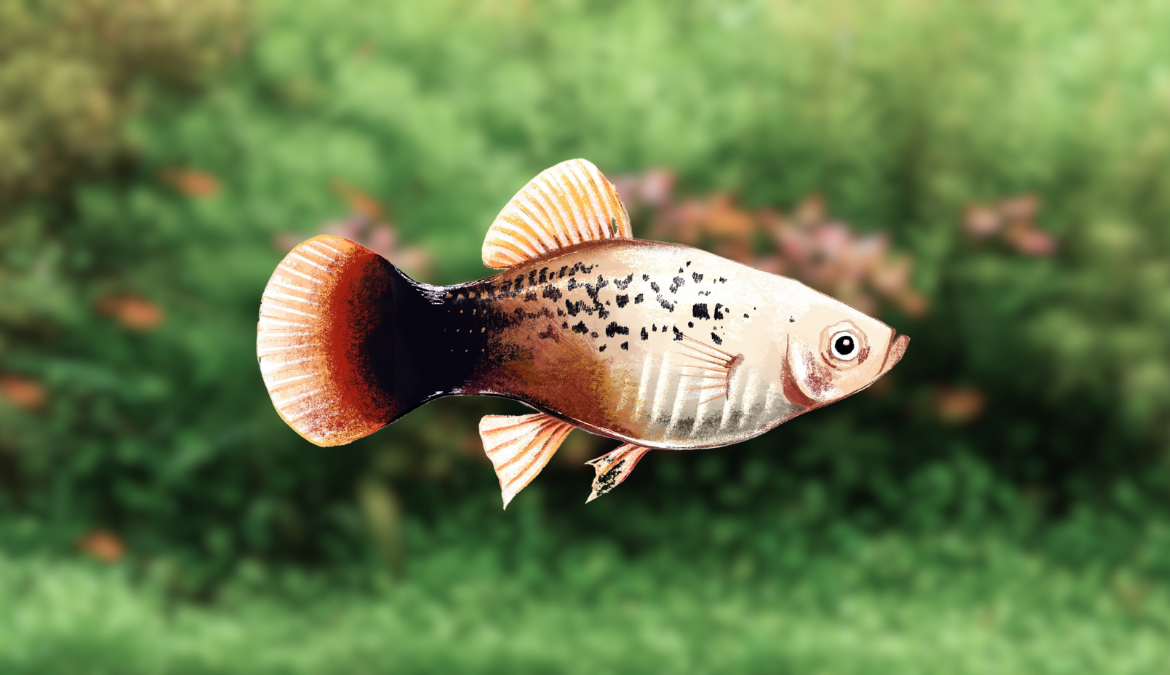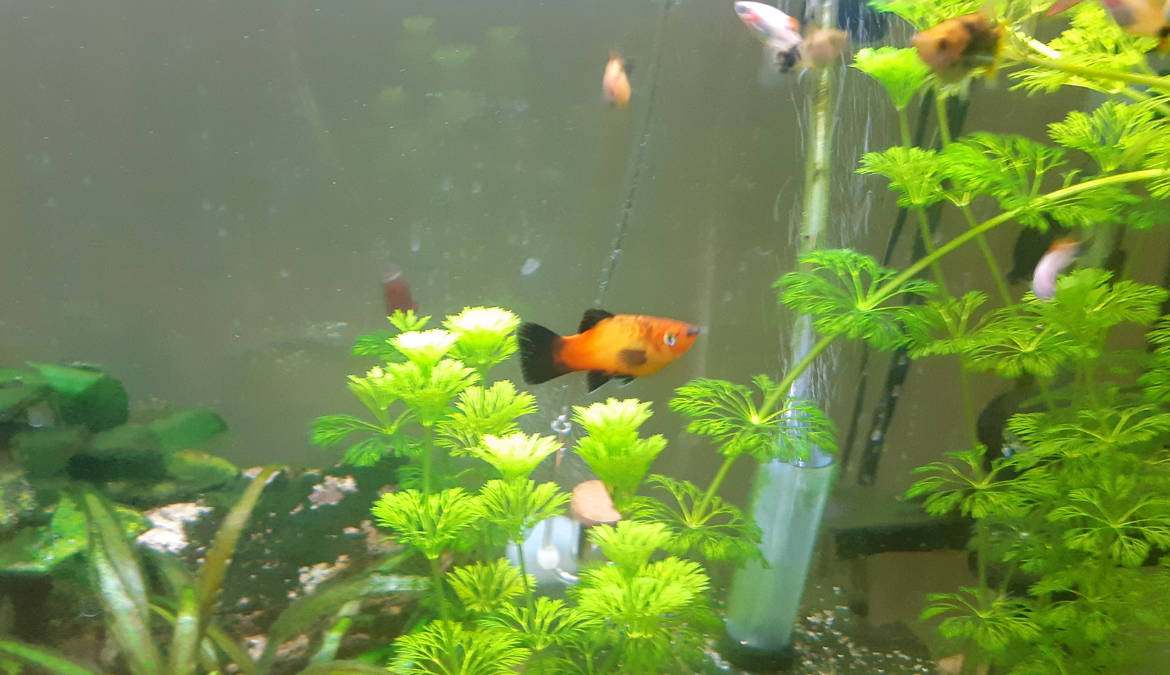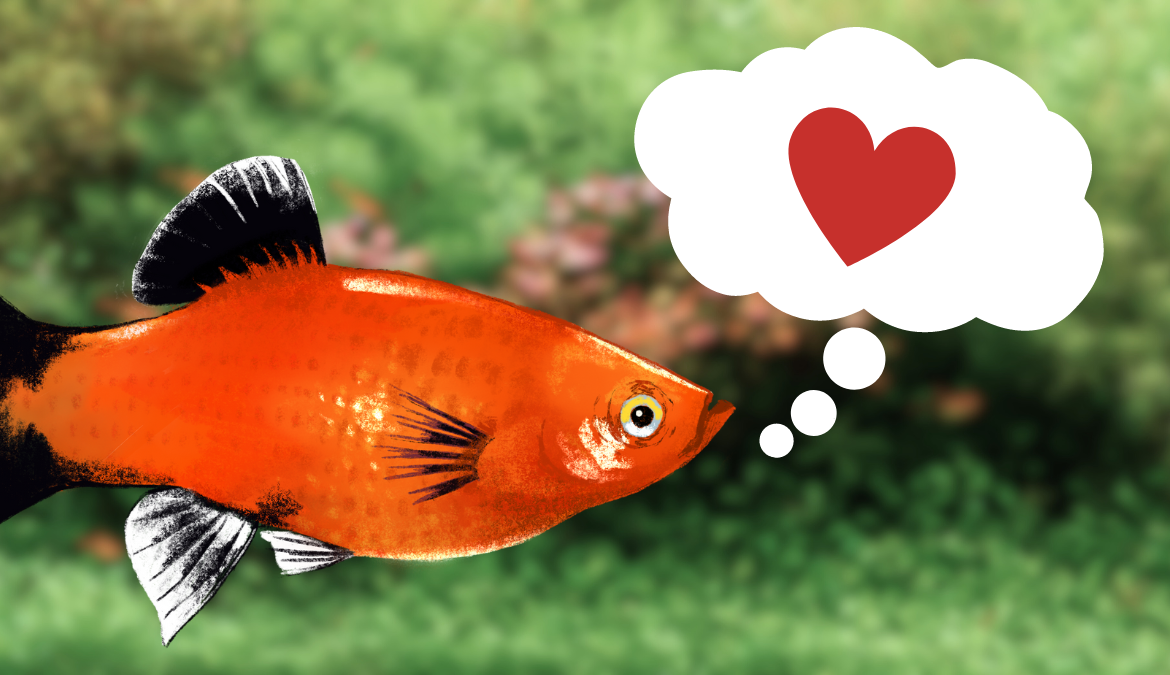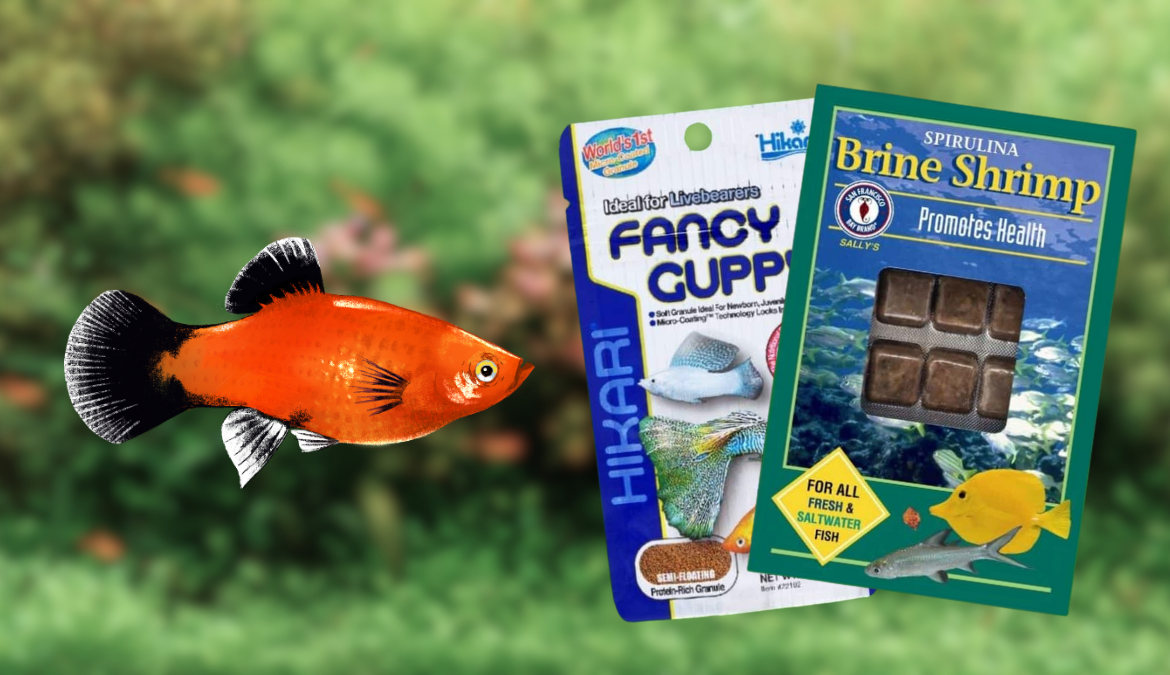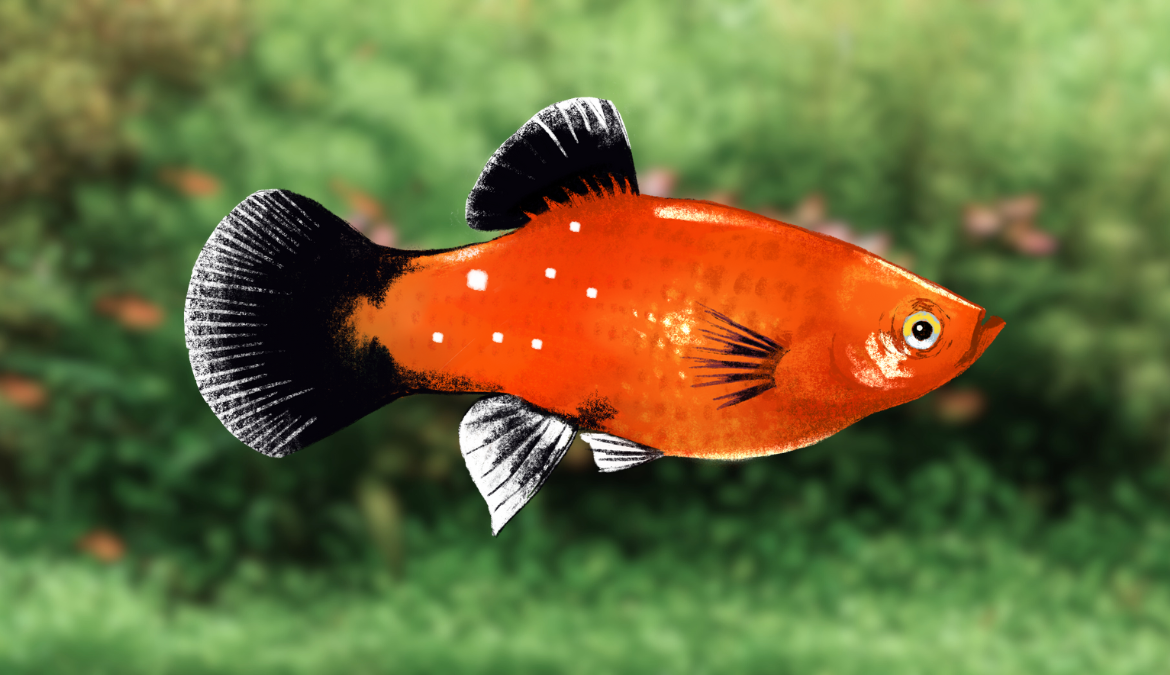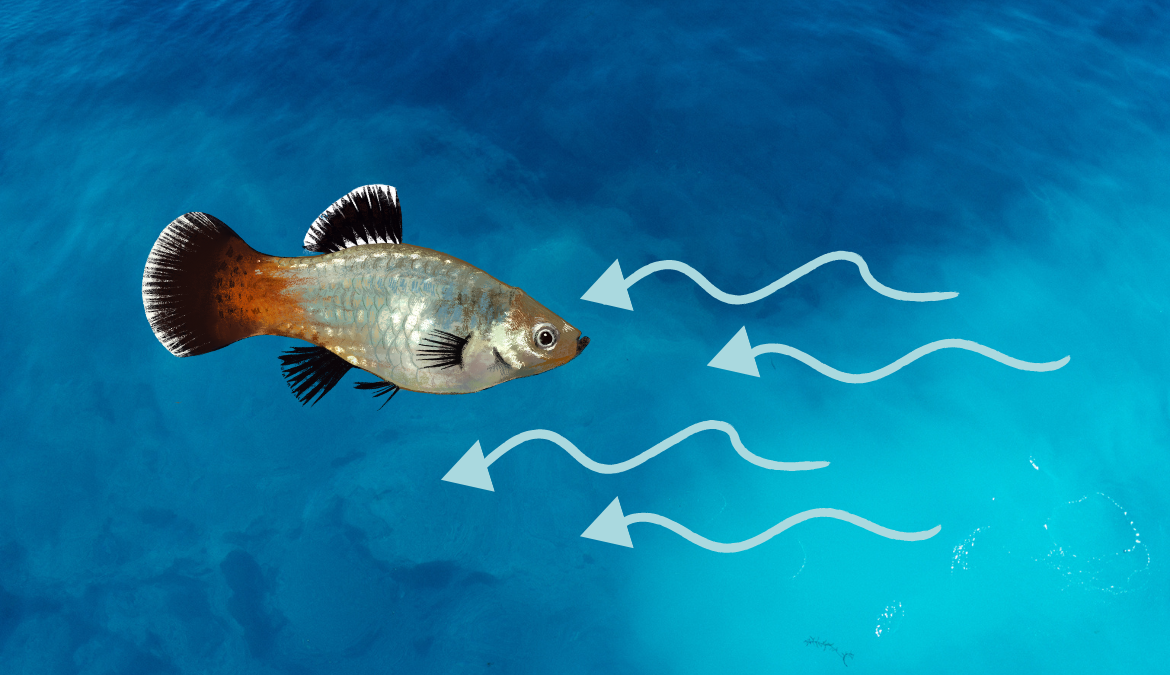Wagtail, Tuxedo, Rainbow, Panda, Comet, Sunburst, Mickey Mouse, Speckled and Variegated are the most common platy colors. But there are many more unique colors and patterns as a result of gene mutation and selective breeding.
Renowned for their striking colors and intriguing patterns, platy fish are a favorite among aquarists. This guide uncovers the fascinating origins behind their diversity.
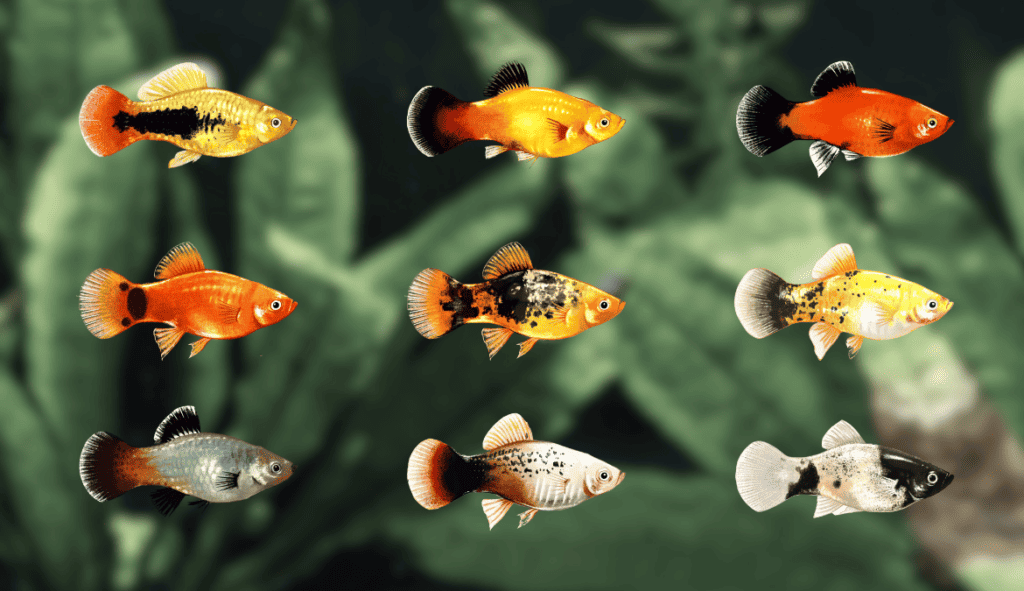
Contents
- 1 Understanding Platy Fish Colors
- 2 Origins of Platy Fish: From Wild Waters to Home Aquariums
- 3 Choosing Your Platy Fish: Considerations
- 4 Platy Fish Colors: Understanding the Palette
- 5 The Influence of Environment on Platy Fish Colors and Patterns
- 6 Platy Fish Breeding: A Colorful Endeavor
- 7 Platy Fish Genetics: Unraveling the Rainbow
Understanding Platy Fish Colors
Platy fish come in a fascinating array of colors and patterns, each unique and vibrant in its own way. This diversity is one of the reasons platies are such a favorite among aquarists. Here, we’ll explore some of the most popular platy colors that can add a splash of life to your aquarium.
Wagtail
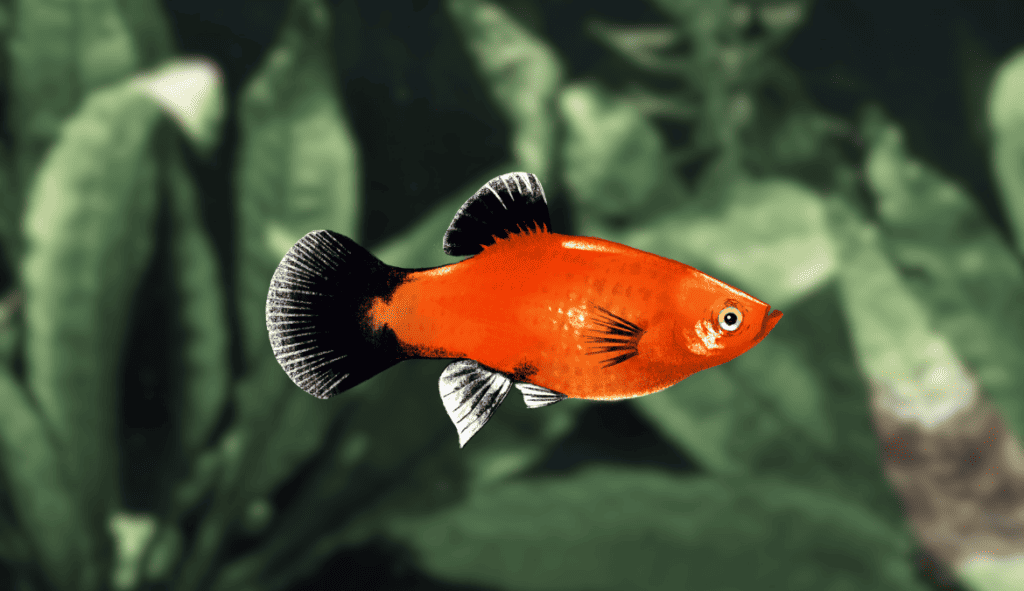
The Wagtail Platy is a striking variety that has a solid-colored body contrasted by a black tail. The solid color can display in a range of colors, from red to blue, offering a bold pop of color to your aquarium.
Red wagtail platies are one of the most popular varietiesyou will find in hobby aquariums.
Tuxedo
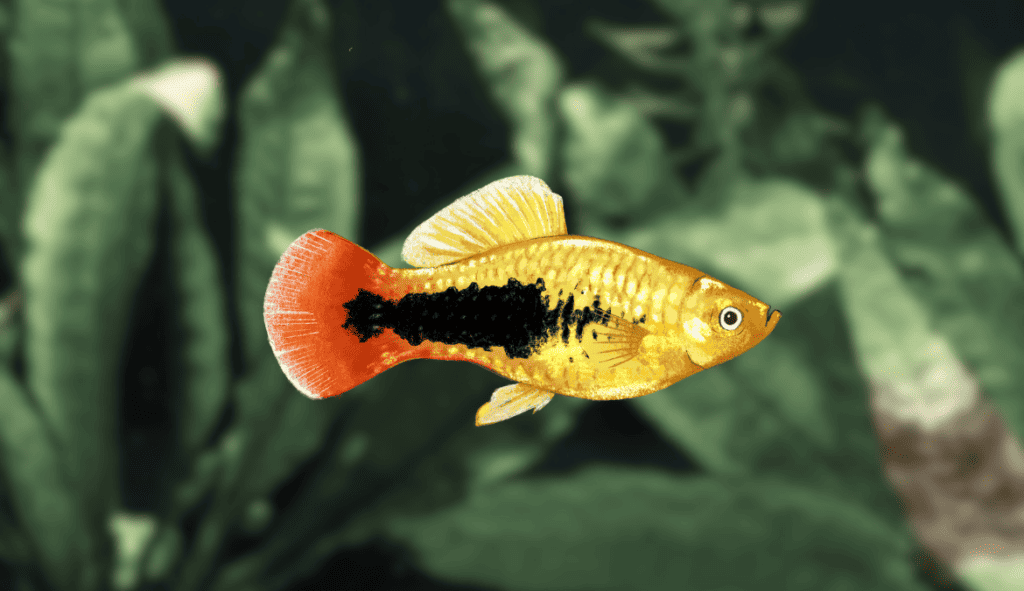
The Tuxedo platy is marked by its elegant two-tone body that appears as if it’s wearing a tuxedo along their side. The front part of the body is typically a light color, while the back half is darker, often black or deep red. This formal attire makes them a sophisticated addition to your fish tank.
Rainbow Wagtail
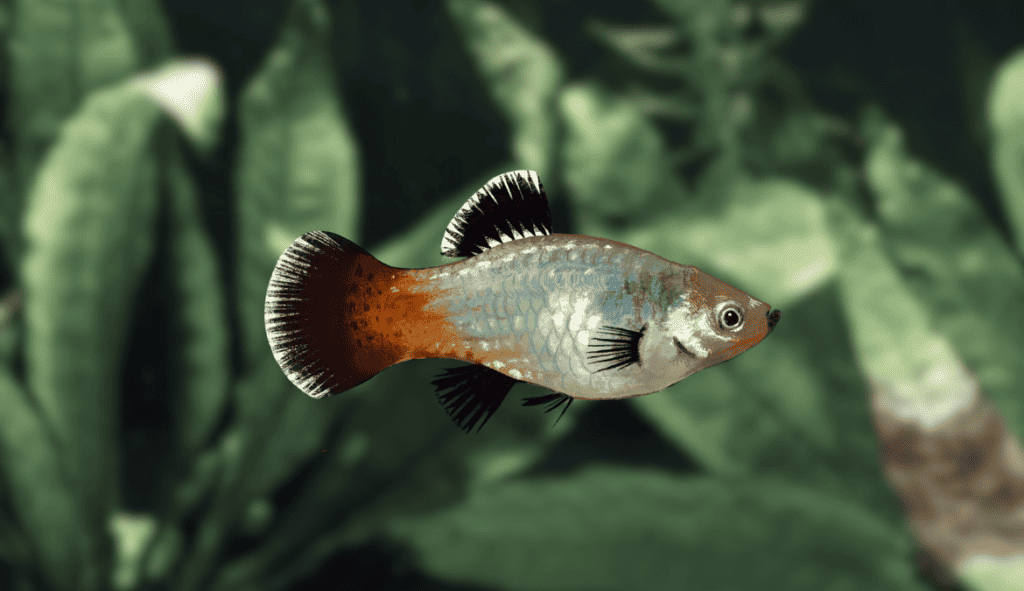
Rainbow wagtail platies boast a stunning mix of colors, with a blend of orange, yellow, and black across their bodies and tails. This vibrant mix ensures they’re a colorful addition to any aquatic community.
Panda
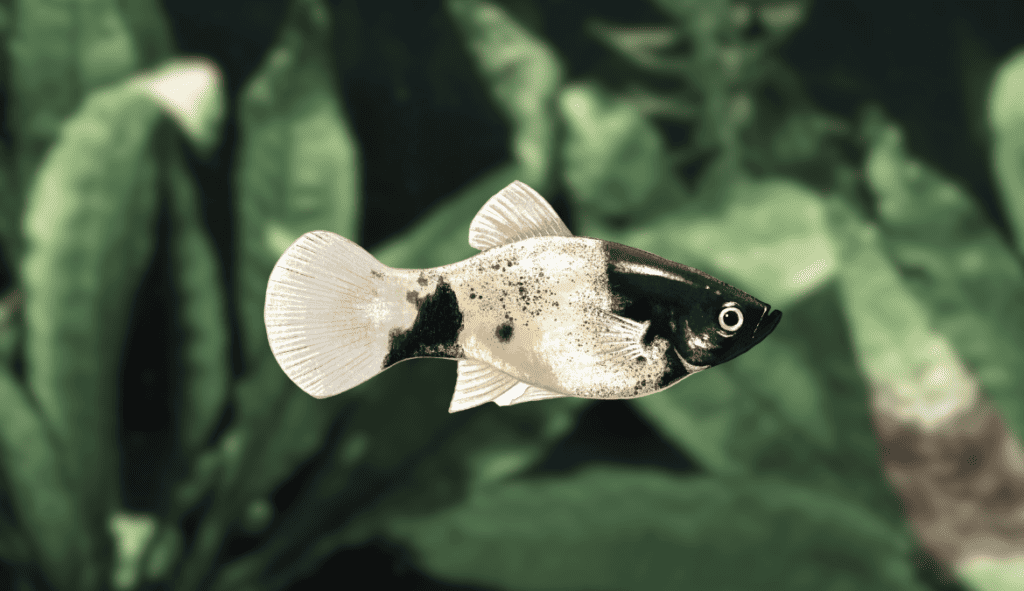
Panda platies have a distinctive black and white color pattern reminiscent of a panda bear. They typically have a white body with patches of black around the eyes, dorsal fin, and sometimes the tail. This unique coloration makes incredible popular and sometimes hard to find in local pet shops.
Comet
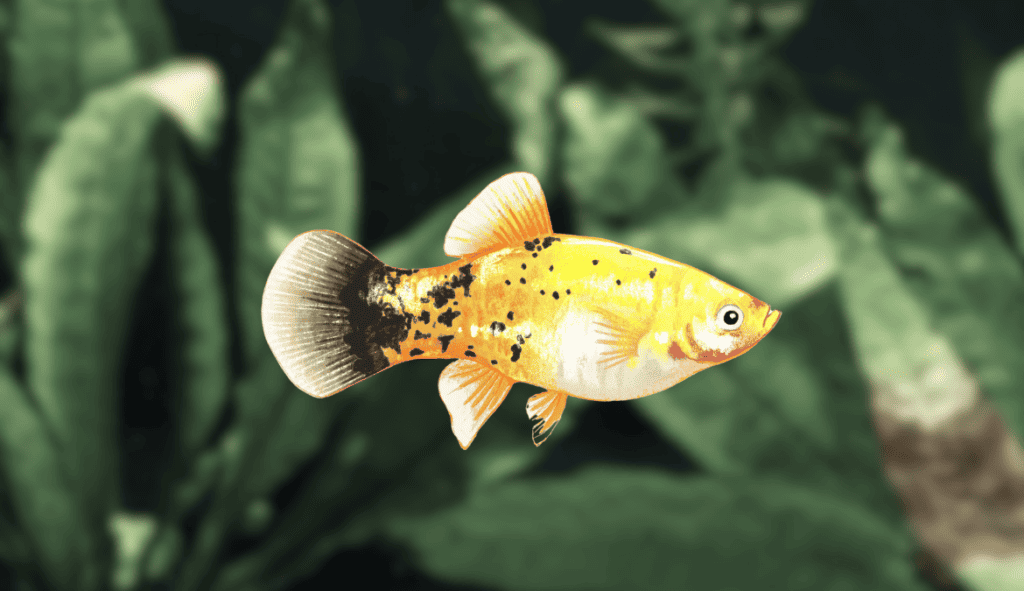
The Comet platy, also known as the Cosmo platy, is named for its celestial beauty. Its body is typically a blend of red, orange, and yellow hues, but it characterized by a scattering of black speckles that look like distant stars. This celestial theme adds an otherworldly charm to your fish tank.
Sunburst
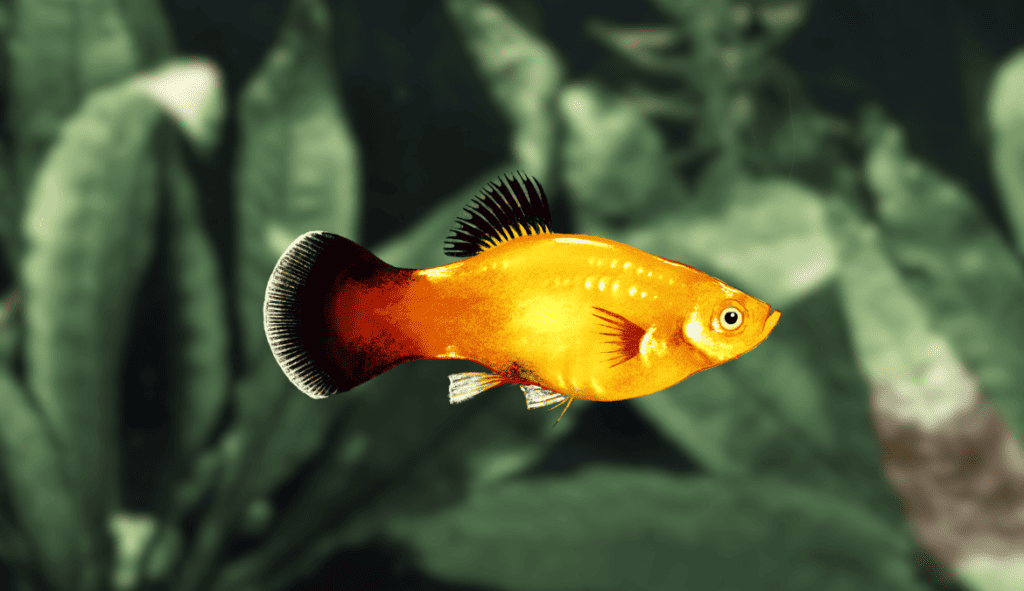
Sunburst platies are known for their bright and sun-colored gradient. They have a beautiful blend of yellow and orange hues that seem to radiate warmth, just like a burst of sunshine. Their bright color can brighten up any aquarium.
Mickey Mouse Platy
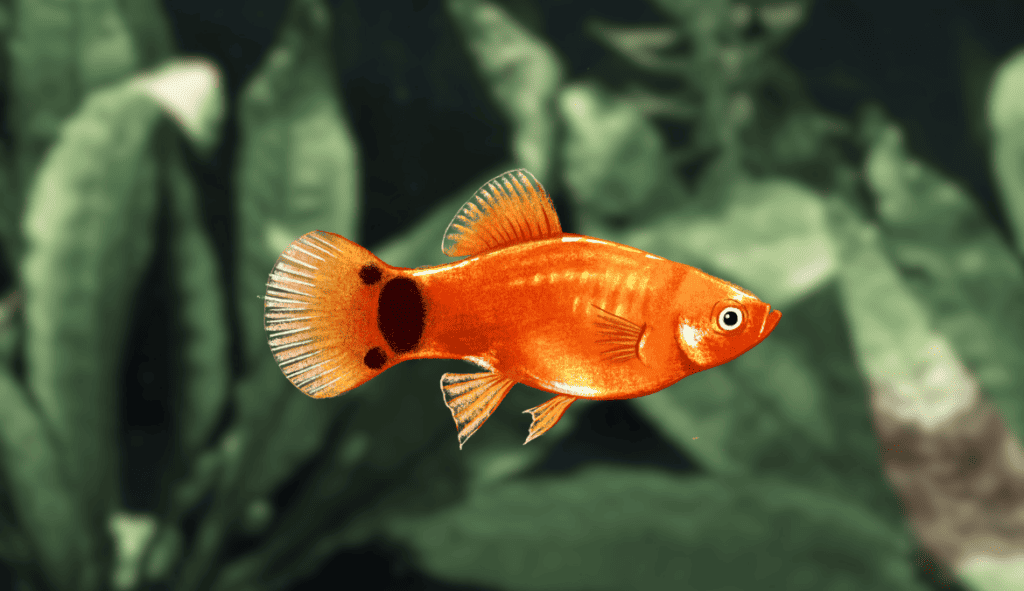
The Mickey Mouse Platy exhibits a unique pattern resembling the silhouette of the iconic Disney character near their tail base. This playful touch of whimsy is a favorite among hobbyists, providing a conversational piece and a touch of magic in your aquarium.
They come in a varety of colors but will all contain this distinctive tail pattern.
Speckled Platy
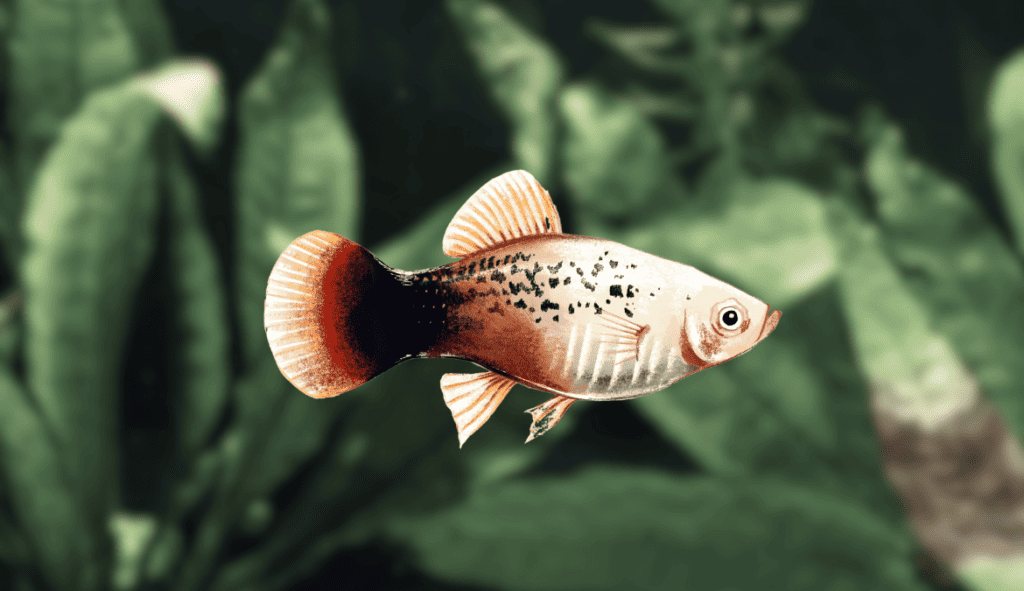
The Speckled Platy stands testament to the marvel of individuality in the aquatic world. Each speckled platy boasts a unique dot pattern, making them ideal for aquarists who value diversity. Watching these patterns emerge in newborn platies is a fascinating process.
Variegated Platy
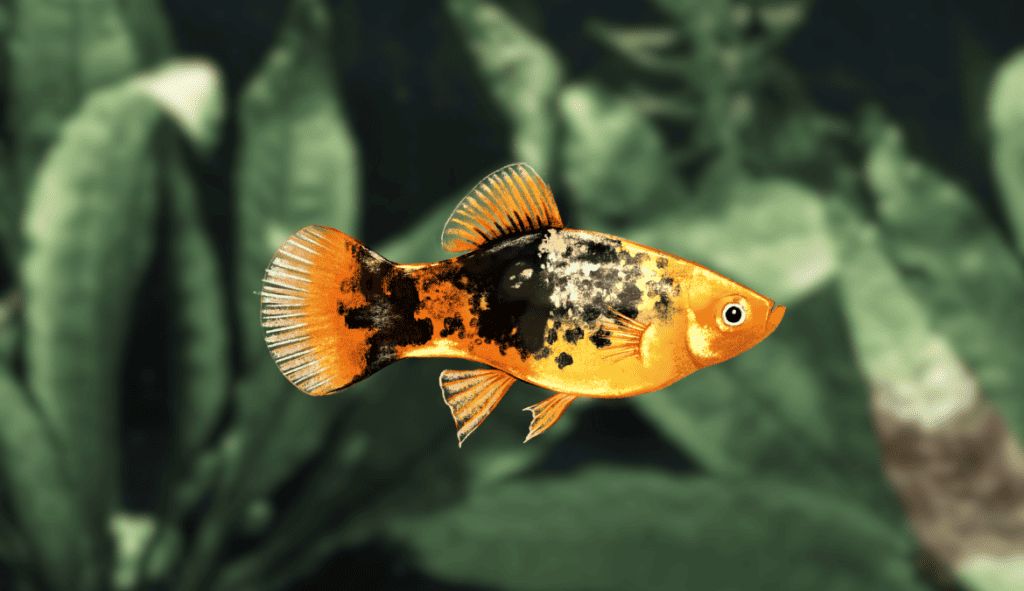
The Variegated Platy is a dynamic blend of colors and patterns. In the wild, these vibrant patterns play crucial roles in mating displays and survival tactics. In an aquarium, they create a dynamic visual landscape, but remember, if your variegated platy exhibits aggressive behavior, it might be a sign of competition for mating.
High Fin
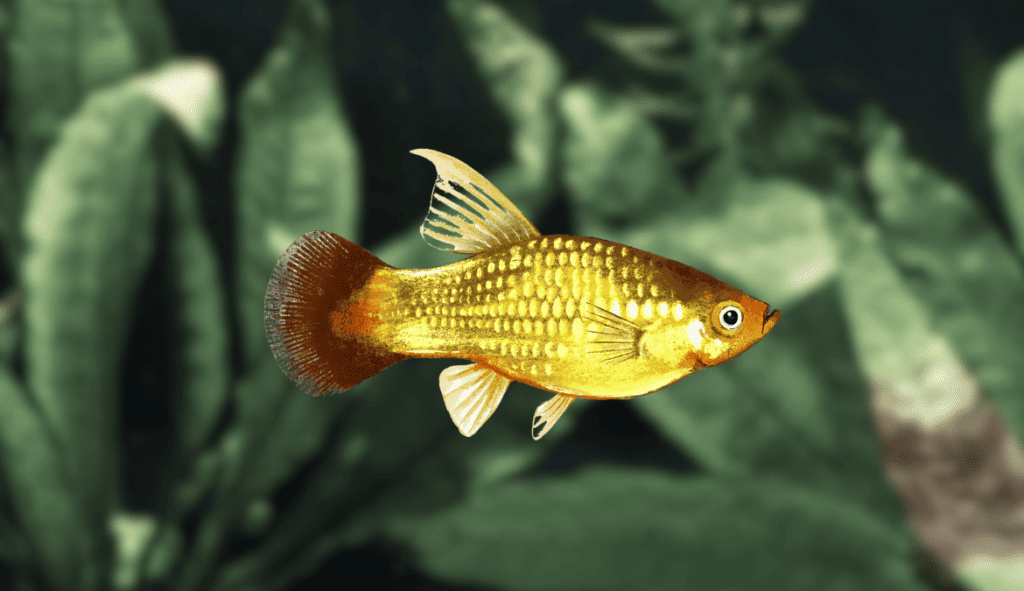
The high fin platy is not defined by its color but rather by its unique fin structure. They exhibit most of the same color patterns as the standard Xiphophorus Variatus platy, but what sets them apart is their tall, sail-like dorsal fin.
This distinctive feature adds a touch of drama to your fish tank.
Origins of Platy Fish: From Wild Waters to Home Aquariums
Understanding the origins of platy fish not only sheds light on their history but also provides insights into their care requirements and behavior.
Native Waters: Central America

Platy fish trace their roots back to the warm, freshwater bodies in Central America, particularly Mexico and Guatemala. These environments have shaped the platy fish’s needs, from water temperature to diet, offering important clues to their optimal care.
However, almost all of the platies you will encounter have been domestically bred for many generations. This causes them to have different color, behaviors and optimal conditions from wild-caught variete
Selective Breeding: The Birth of Varieties
The diverse platy fish varieties we see today are largely the result of selective breeding. This process, carried out by breeders and hobbyists, involves choosing specific fish to reproduce based on desirable traits.
Over generations, these traits become more pronounced, giving rise to distinct varieties.
Choosing Your Platy Fish: Considerations
When selecting platy fish for your aquarium, there are several factors to consider:
- Color and Pattern: As explored above, platy fish come in a myriad of colors and patterns. Your choice should align with your aesthetic preferences and the visual balance of your aquarium.
- Behavior: Some platy varieties might be more active or aggressive than others. This is not a result of their color but rather the genetic traits that have been bred into them. Observe the fish’s behavior before making a selection to ensure it aligns with your existing tank mates and do your best not to overstock your tank.
- Care Requirements: While platy fish generally share similar care needs, some ages and genders may require more specific conditions or diet. For example, it’s best to keep a 1:3 female-to-male ratio to minimize stress on the females. Also, you might consider different diets for platy fry versus adults.
- Breeding Intentions: If you plan to breed your platy fish, consider selecting varieties that produce interesting color and pattern combinations.
Choosing the right platy fish variety can greatly enhance your aquarium’s visual appeal and contribute to a balanced ecosystem. By understanding their colors, patterns, and origins, you can make informed decisions that ensure the health and happiness of your aquatic pets.
Platy Fish Colors: Understanding the Palette
The remarkable variety of platy fish colors, from solid hues to multi-colored marvels, is a testament to their fascinating genetics and the art of selective breeding.
Solid Colors: One-Color Wonders
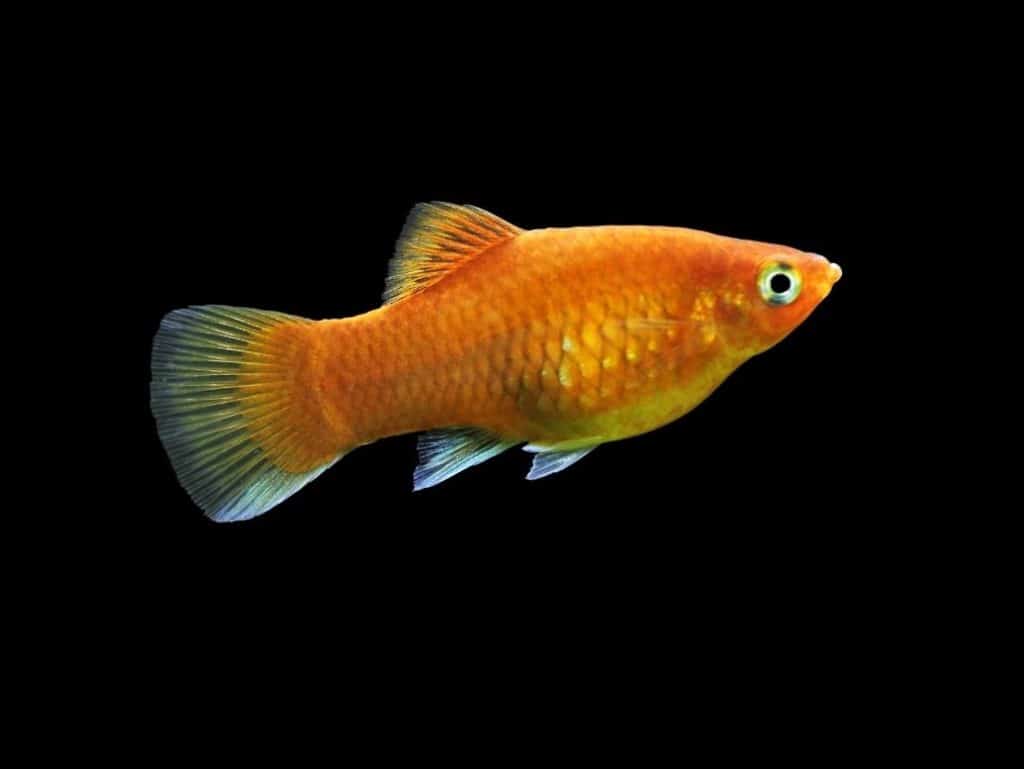
Platies come in a rainbow of solid colors, including red, blue, orange, black, and even green. These solid-colored varieties, like the Blue Platy or the Black Platy, can add a vibrant splash of color to your aquarium.
Multi-Colored Varieties: A Colorful Symphony
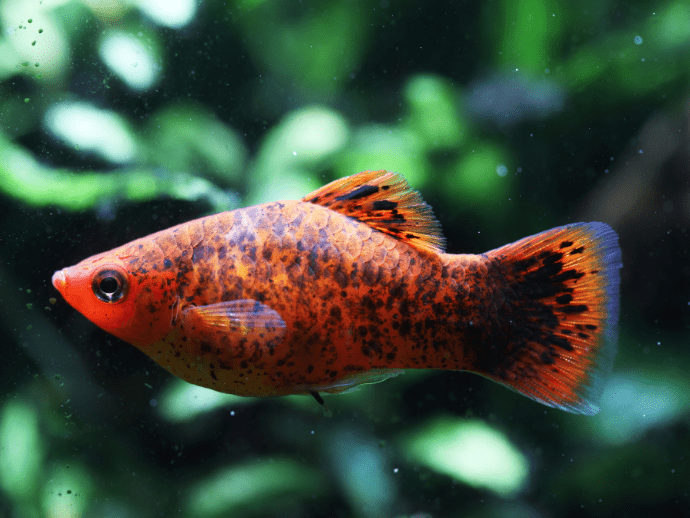
Multi-colored platies, such as the Sunset Platy or the Marigold Platy, exhibit a fascinating mix of colors. These varieties can bring a dynamic visual element to your tank, stimulating both the human eye and the behavioral responses of other fish.
The Influence of Environment on Platy Fish Colors and Patterns
While genetics play a significant role in the colors and patterns of platy fish, environmental factors can also influence these traits.
Diet

A platy fish’s diet can impact its color vibrancy. High-quality foods rich in carotenoids can help enhance and maintain their bright colors. Check out our complete feeding guide for detailed information on what to feed your platy fish.
We recommend feeding your platies a varied diet comprised of vegetables, proteins and live foods. This will maximize their color potential, provide enrichment, and improve their quality of life.
Stress
Stress can cause platy fish to lose their color vibrancy. It’s crucial to provide a stress-free environment, which involves maintaining optimal water conditions, providing enough space, and carefully managing tank mates to avoid aggression.
Lighting
Appropriate aquarium lighting can also affect how platy fish colors appear. Too much light can wash out their colors, while too little can make them seem dull.
You might consider choosing an adjustable RGB aquarium light so you can customize the color spectrum of your aquarium.
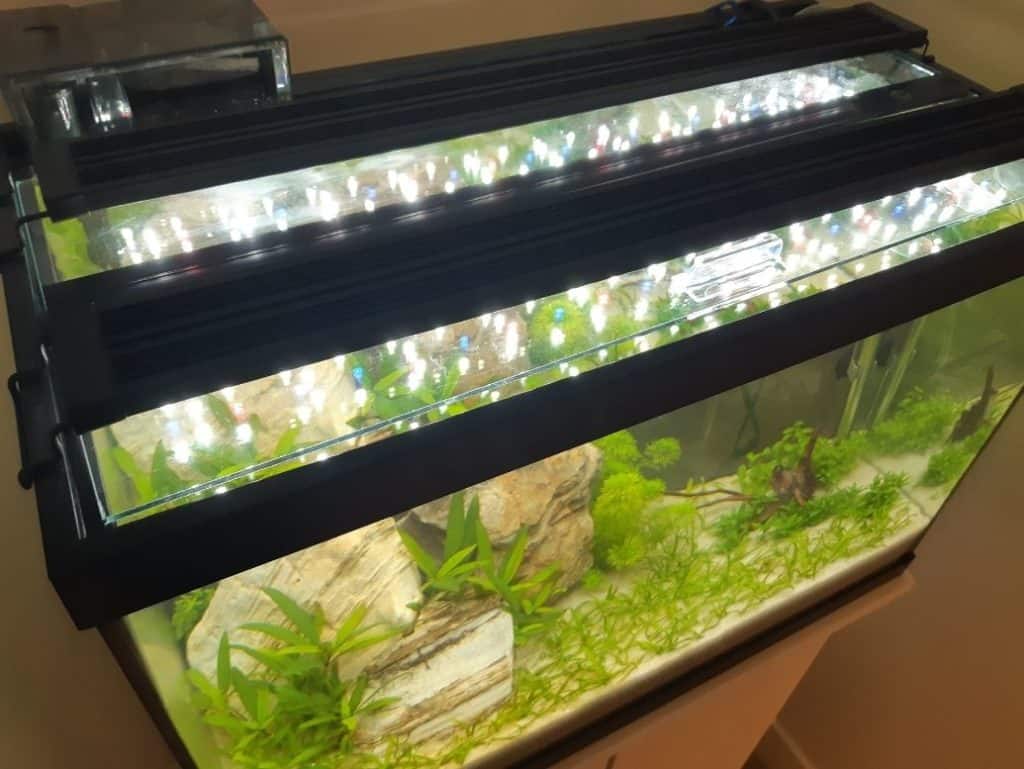
As we’ve explored, platy fish come in an astonishing array of colors and patterns. Understanding these traits, along with their origins, can deepen your appreciation for these captivating creatures and help you make informed decisions in their care and selection.
In our next section, we’ll delve into the fascinating world of platy fish breeding, including how to encourage breeding and understanding the signs of a pregnant platy.
Platy Fish Breeding: A Colorful Endeavor
Platy fish, with their live-bearing nature and wide variety of colors and patterns, are a favorite among breeders. Let’s explore how these fascinating traits come to life in new generations.
The Breeding Process
Unlike many fish species, platies give live birth instead of laying eggs. They are prolific breeders, often requiring little intervention from the aquarist. However, understanding the mating process and the signs of a pregnant platy can be invaluable in ensuring a successful breeding experience.
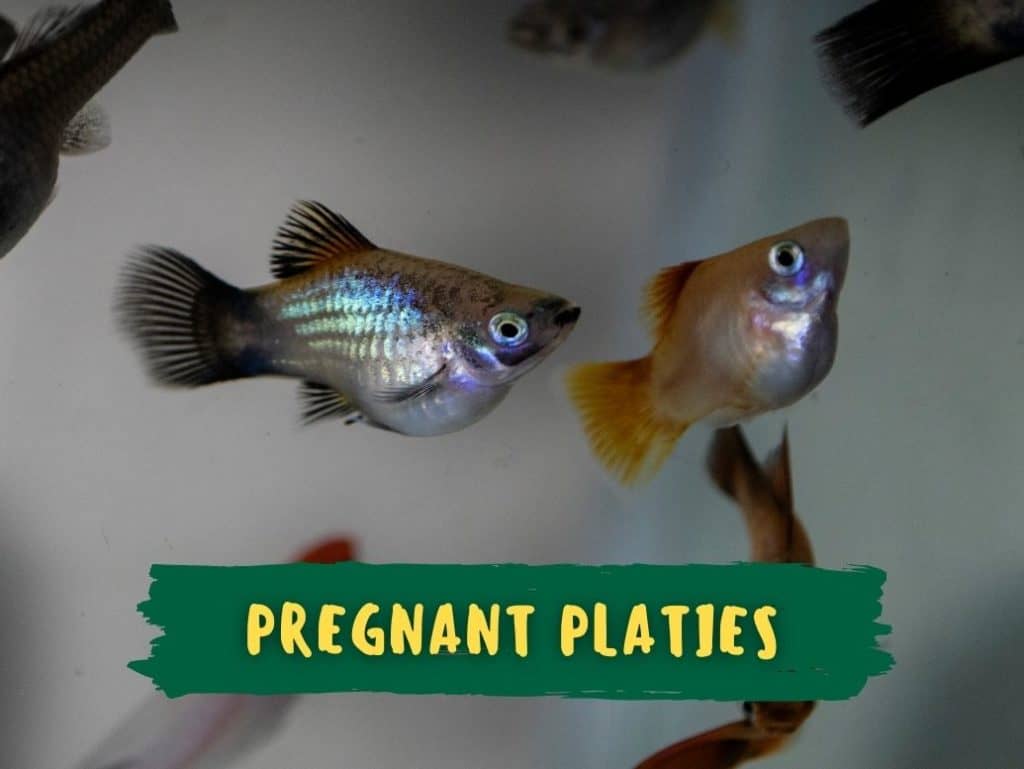
Selective Breeding: Crafting Colors and Patterns
Selective breeding is the process of choosing specific platies to mate based on their desirable traits. This practice is how many of the unique colors and patterns we’ve discussed have been developed.
By understanding the genetics of platy fish colors and patterns, breeders can predict and influence the appearance of the offspring. Desireable colors and patterns will then be selectively bred to produce more platies with similar traits.
Platy Fish Genetics: Unraveling the Rainbow
The genetics behind the vast array of platy fish colors and patterns is complex and fascinating. Simply put, platy fry are born with DNA that determines how they look.
If you enjoy certain traits or are planning on breeding and selling platies, it’s useful to understand how differen traits are passed to offspring.
Dominant and Recessive Traits
Dominant colors are those that are expressed even when only one copy of the gene is present. This means that if a platy fish has one gene for a dominant color and one for a recessive color, the dominant color will be the one that’s visibly expressed.
Recessive colors, on the other hand, are only expressed when two copies of the gene are present. This means that a platy fish will only show a recessive color if it has inherited the recessive color gene from both parents.
For platy fish, some of the dominant colors are black, gold (yellow), and coral (red-orange). These colors are more likely to be passed on to offspring and are more commonly seen.
Recessive colors include blue and true red. Platies must inherit the gene for these colors from both parents in order for them to be expressed. As such, these colors are less common.
The Role of Mutation
Occasionally, spontaneous mutations can result in new colors or patterns. These unique traits can then be propagated through selective breeding to create a new variety of platy fish.
Over time, experienced breeders can produce unique and desirable platy varieties.
Influence of Gender
Interestingly, gender can also play a role in platy fish colors and patterns. Male platies often exhibit brighter colors and more defined patterns than females, likely due to evolutionary pressures related to attracting mates.
Understanding the origins and genetics of platy fish colors and patterns can enrich your fish-keeping experience, allowing you to appreciate these vibrant creatures on a deeper level. It can also guide your decisions in fish selection and breeding, and in providing the best care for your platies.


